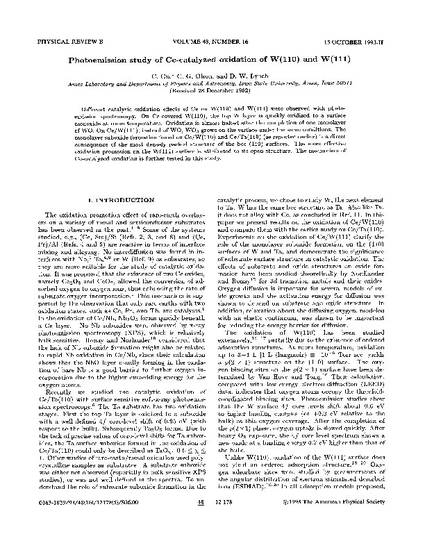
Article
Photoemission study of Ce-catalyzed oxidation of W(110) and W(111)
Physical Review B
Document Type
Article
Disciplines
Publication Date
10-1-1993
DOI
10.1103/PhysRevB.48.12178
Abstract
Different catalytic oxidation effects of Ce on W(110) and W(111) were observed with photo- emission spectroscopy. On Ce-covered W(110), the top W layer is quickly oxidized to a surface monoxide at room temperature. Oxidation is almost halted after the completion of one monolayer of WO. On Ce/W(111), instead of WO, WO3 grows on the surface under the same conditions. The monolayer suboxide formation found on Ce/W(110) and Ce/Ta(110) (as reported earlier) is a direct consequence of the most densely packed structure of the bcc (110) surfaces. The more effective oxidation promotion on the W(111) surface is attributed to its open structure. The mechanism of Ce-catalyzed oxidation is further tested in this study.
Copyright Owner
The American Physical Society
Copyright Date
1993
Language
en
File Format
application/pdf
Citation Information
C. Gu, C. G. Olson and David W. Lynch. "Photoemission study of Ce-catalyzed oxidation of W(110) and W(111)" Physical Review B Vol. 48 Iss. 16 (1993) p. 12178 - 12182 Available at: http://works.bepress.com/david_lynch1/67/

This article is from Pysical Review B 48 (1993): 12178, doi:10.1103/PhysRevB.48.12178. Posted with permission.